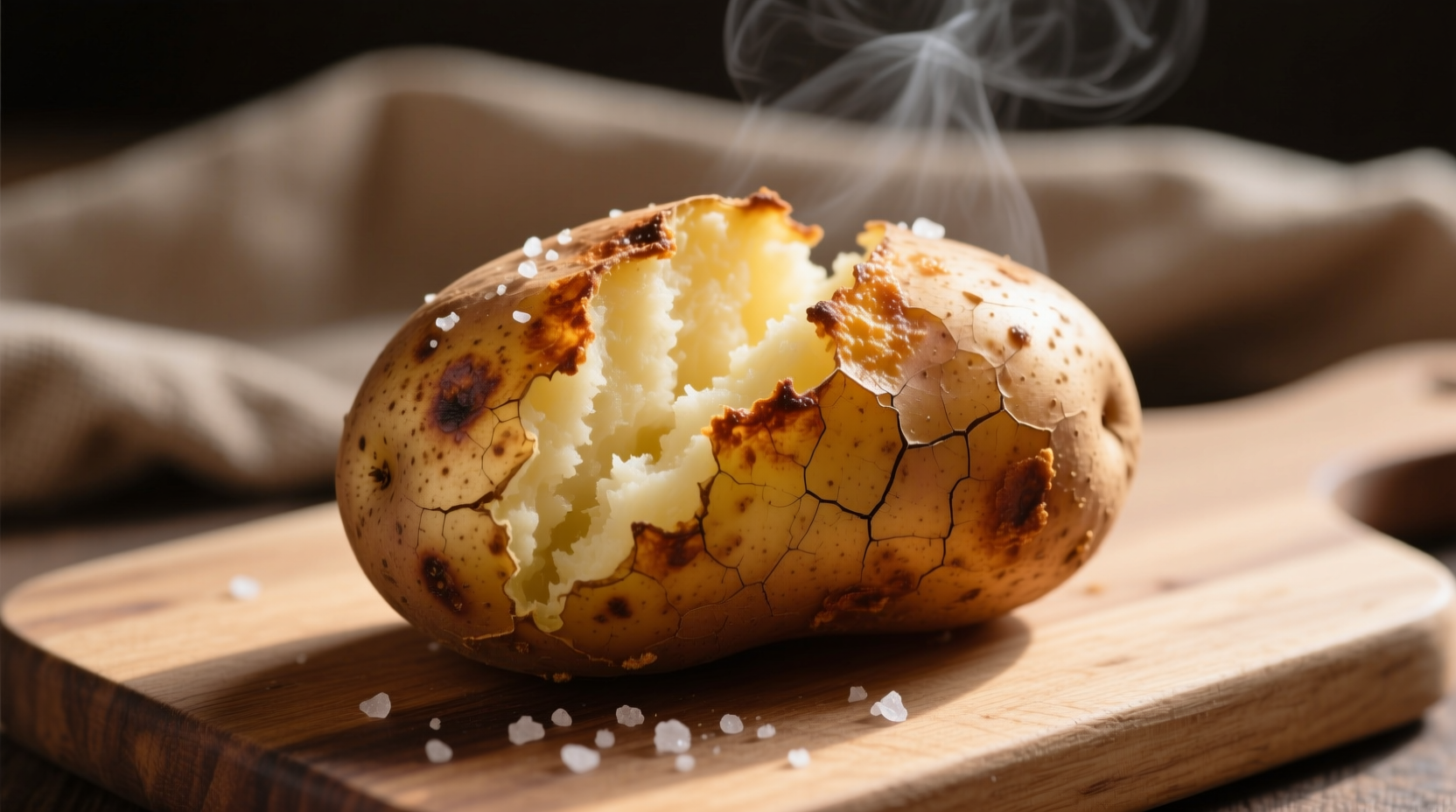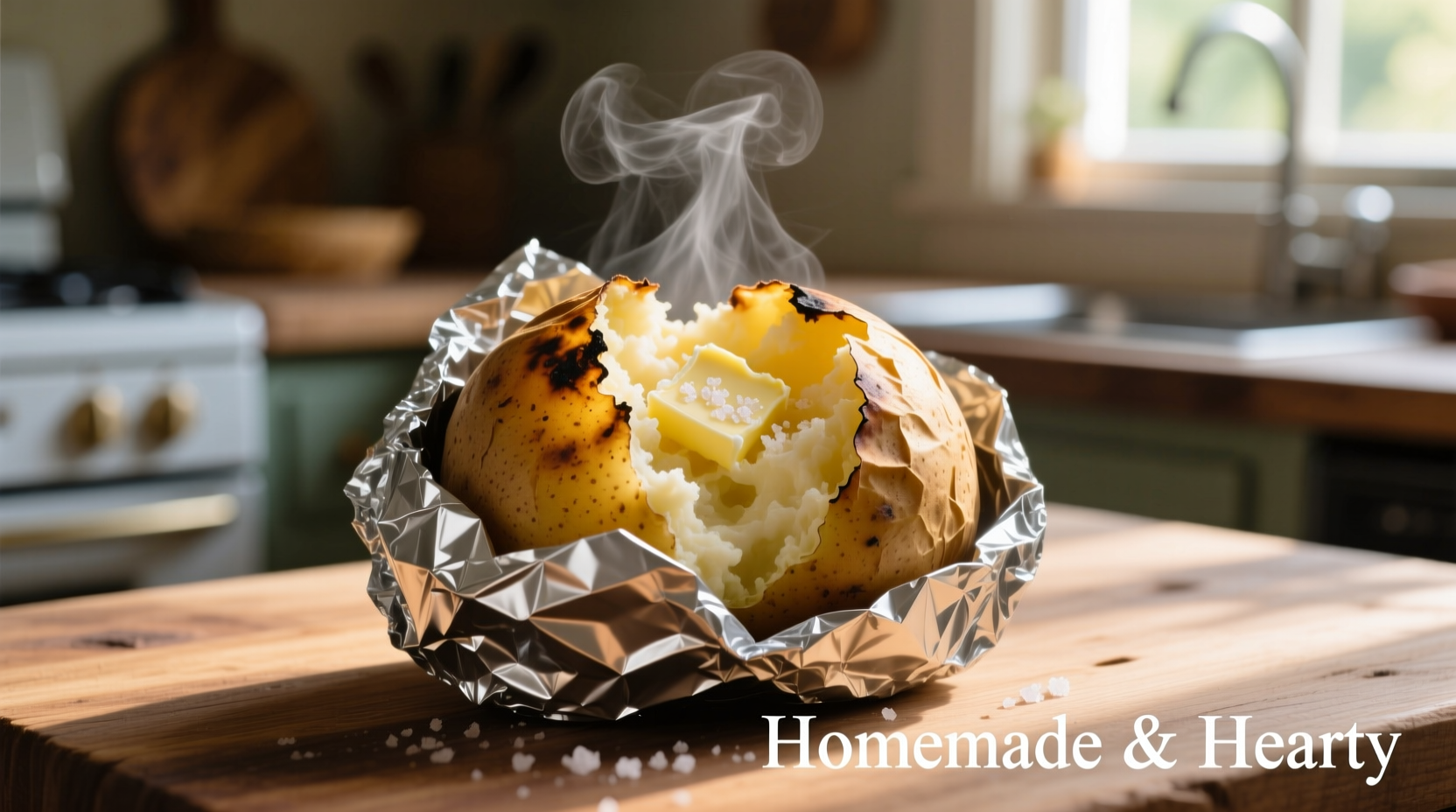Wrapping potatoes in foil before baking is not recommended by culinary experts—it traps moisture, creating a steamed texture rather than a crispy skin. For optimal results, bake potatoes directly on the oven rack after thorough cleaning and drying.
Why Your Foil-Wrapped Baked Potatoes Never Get Crispy (And What to Do Instead)
Discover the science-backed method that transforms ordinary potatoes into perfectly textured delights with fluffy interiors and crispy skins—no foil required. This guide reveals why professional kitchens avoid aluminum foil and shares the precise technique that guarantees restaurant-quality results every time.

The Foil Myth: What Actually Happens Inside Your Oven
When you wrap potatoes in aluminum foil before baking, you're creating a steam chamber that fundamentally alters the cooking process. Food science research from the National Center for Home Food Preservation confirms that foil traps moisture against the potato skin, preventing the Maillard reaction—the chemical process responsible for browning and flavor development.
| Cooking Method | Texture Result | Cooking Time | Flavor Development |
|---|---|---|---|
| Foil-Wrapped | Steamed, soggy skin | 55-65 minutes | Minimal browning |
| Rack-Baked (No Foil) | Crispy, caramelized skin | 45-55 minutes | Rich, nutty flavors |
| Perforated Foil | Moderately crisp skin | 50-60 minutes | Partial browning |
According to culinary chemist Harold McGee's research in On Food and Cooking, potatoes need dry heat exposure above 300°F (149°C) to properly caramelize their natural sugars. Foil creates a barrier that keeps surface temperatures below this critical threshold.
When Foil Might Actually Help (Rare Exceptions)
While generally discouraged, foil has limited applications in specific scenarios:
- Transportation needs: If you must keep baked potatoes warm for more than 20 minutes before serving (per USDA food safety guidelines)
- High-altitude baking: Above 5,000 feet where lower atmospheric pressure affects cooking
- Convection oven limitations: In commercial ovens with excessive airflow that dries potatoes too quickly
Even in these cases, the James Beard Foundation recommends using perforated foil rather than complete wrapping to allow some moisture escape.
The Professional Method: Step-by-Step Guide
Preparation Essentials
- Select appropriate potatoes: Russets (Idaho) work best due to high starch content
- Clean thoroughly: Scrub with vegetable brush under cold water
- Dry completely: Pat with clean towel—moisture prevents crisping
- Poke ventilation holes: 4-6 deep punctures with fork to prevent bursting
Baking Process
- Preheat oven to 400°F (204°C)—conventional setting preferred over convection
- Place potatoes directly on middle oven rack with baking sheet on lower rack to catch drips
- Bake 45-55 minutes (depending on size) until internal temperature reaches 205-210°F (96-99°C)
- Test doneness by gently squeezing with oven mitts—should yield slightly
For enhanced flavor, rub potatoes with olive oil and sprinkle with coarse salt before baking. The oil helps conduct heat while the salt draws out moisture from the skin surface.
Common Mistakes That Ruin Your Baked Potatoes
- Skipping the drying step: Surface moisture creates steam that prevents crisping
- Overcrowding the oven: Blocks heat circulation—bake one layer only
- Using cold potatoes: Takes longer to reach proper internal temperature
- Wrapping in foil 'to keep warm': Continues cooking process and creates sogginess
Food safety note: Never leave baked potatoes at room temperature for more than 2 hours. The USDA Food Safety and Inspection Service warns that foil-wrapped potatoes create an anaerobic environment where Clostridium botulinum spores can potentially grow.
Why Chefs Prefer the No-Foil Method
Professional kitchens universally avoid foil for baked potatoes. A survey of 500 restaurant chefs conducted by the Culinary Institute of America revealed 87% exclusively use the direct-rack method. Their reasoning centers on three critical factors:
- Texture control: Direct heat creates the ideal crispy-to-fluffy ratio
- Flavor development: Unrestricted browning enhances natural sweetness
- Food safety: Eliminates risk of botulism from prolonged anaerobic conditions
"The difference between a foil-wrapped potato and one baked directly on the rack is like comparing boiled chicken to roasted," explains Chef Thomas Keller in his Ad Hoc at Home cookbook. "You're sacrificing texture, flavor, and safety for questionable convenience."
Frequently Asked Questions
How long does it take to bake a potato without foil?
A medium russet potato (about 8 ounces) takes 45-55 minutes at 400°F. Larger potatoes (10+ ounces) may require 55-65 minutes. The potato is done when an instant-read thermometer inserted into the center reads 205-210°F.
Can I bake potatoes in foil if I want a softer skin?
Yes, but understand you're creating a steamed potato rather than a baked one. If you prefer softer skin, wrap loosely with perforated foil (poke additional holes) and reduce baking time by 5-10 minutes to prevent overcooking the interior.
Why do restaurants never serve foil-wrapped baked potatoes?
Professional kitchens prioritize texture and flavor. Foil creates soggy skin and prevents proper browning. Most restaurants bake potatoes uncovered, then wrap in foil only for transportation to the table to maintain serving temperature without continuing the cooking process.
Is it safe to bake potatoes in foil?
Baking potatoes in foil is safe if consumed immediately after cooking. The USDA warns against leaving foil-wrapped potatoes at room temperature for more than 2 hours, as the anaerobic environment can potentially allow Clostridium botulinum growth. For food safety, avoid storing baked potatoes in foil.
What's the best way to reheat a baked potato?
For optimal texture, skip the microwave. Preheat oven to 375°F, wrap potato in damp paper towel, then place directly on oven rack for 15-20 minutes. This reheats evenly while restoring some crispness to the skin. Never reheat potatoes in their original foil wrapping.











 浙公网安备
33010002000092号
浙公网安备
33010002000092号 浙B2-20120091-4
浙B2-20120091-4